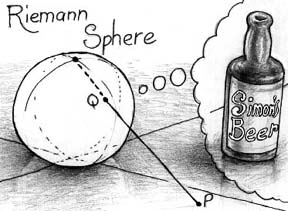 |
|
|
|
|
 |
|
|
|
|
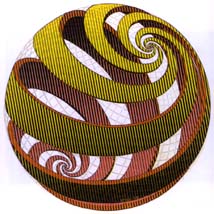 |
|
©1999 Cordon Art B.V. - Baarn - Holland. All rights reserved. Used with Permission. |
|
|
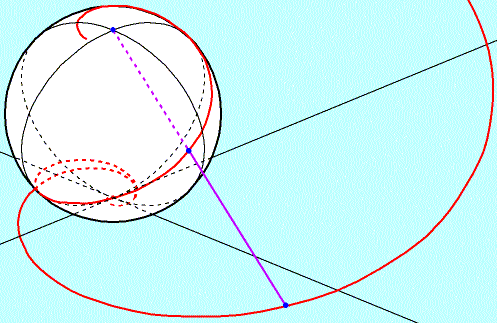 |
|
I believe Escher's sphere spirals are logarithmic spirals mapped onto a Riemann sphere. |
|
|
Turn Escher's Sphere Spirals upside down and it's still the same!
I'll try to show logarithmic spirals mapped onto a Riemann sphere have
180 degree symmetry.
-
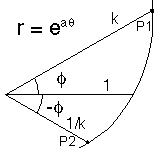 |
|
Note that if r = k at angle phi, then r = 1/k at - phi. |
|
|
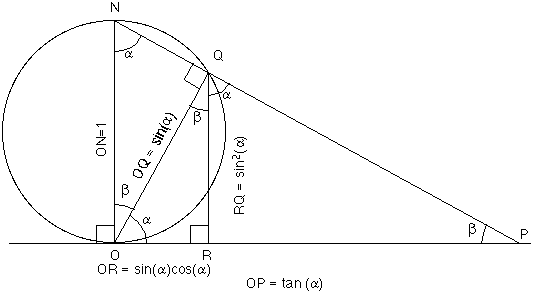 |
|
But the coordinates r and vertical distance are changed. Let the length of OP=k - Then alpha = atan(k) = acos(1/sqrt(k^2+1)) - Cylindrical coordinates for Q are (sin(alpha) cos(alpha), phi, sin^2(alpha)) The trigonometric expressions can be given in terms of k. Explanation (1/(k+1/k), phi, k^2/(1 + k^2)) - Cartesian coordinates for Q: ((1/(k+1/k)) cos(phi), (1/(k+1/k)) sin(phi), k^2/(1+k^2)) |
|
|
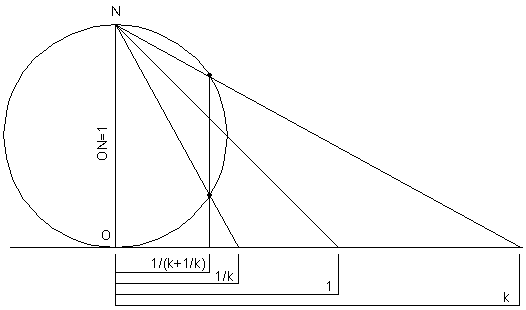 |
|
So points P whose radius = k or 1/k map into points with the same radius. |
|
|
|
|
||||||||||||||||||
In other words,
|
||||||||||||||||||
|
This is easy to compute: (x i, y j, z k) maps into (x i, - y j, - z k) |
||||||||||||||||||
|
|
Recall points P1 and P2 in Illustration 3.
P1 cylindrical coordinates: (k, phi, 0)
P2 cylindrical coordinates: (1/k, -phi, 0)
-
Let P1 map to Q1 and P2 to Q2 on
our dropped sphere
-
P1, that is (k, phi, 0) ---> Q1, that is ((1/(k+1/k))
cos(phi), (1/(k+1/k)) sin(phi), 1/2 - 1/(1+k^2))
which can be rewritten:
((1/(k+1/k)) cos(phi), (1/(k+1/k)) sin(phi), (k^2-1)/2((1+k^2)))
-
P2, that is (1/k, -phi, 0) ---> Q2, that is ((1/(k+1/k))
cos(-phi), (1/(k+1/k)) sin(-phi), 1/2 - 1/(1+1/k^2))
which can be rewritten:
((1/(k+1/k)) cos(phi), -(1/(k+1/k)) sin(phi),
-(k^2-1)/2((1+k^2)))
-
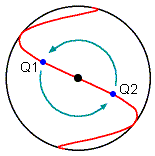 |
|
|
|
|
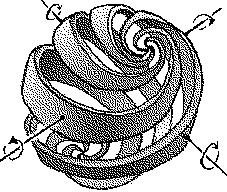 |
|
Rather the axi through the equator should pierce the center of each band. There are 4 more equatorial axi that pierce the centers of the 4 gaps that twist about the sphere. I see 1 axes of 4 way symmetry going through the poles and 4 axes of 2 way symmetry going through the equator. |
|
|
-
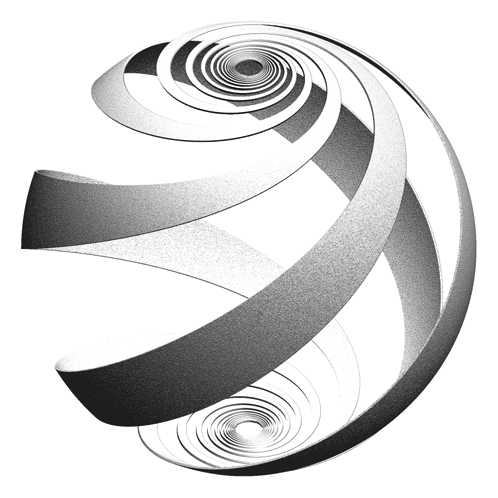 |
| This is Ramiro Perez'
image of a Loxodrome Sphere. Loxodromes intersect longitude lines at a
constant angle. Logarithmic spirals cross radial lines through the
origin at constant angles. The Riemann mapping is conformal (angles are
preserved). Radial lines on the plane map to longitude lines on the
Riemann sphere. These facts make me believe a mapping of a logarithmic
spiral onto the Riemann Sphere is a loxodrome. |